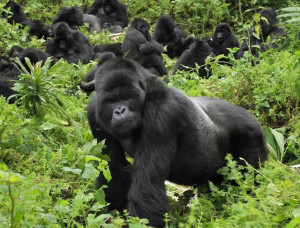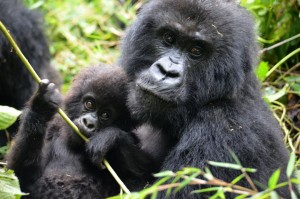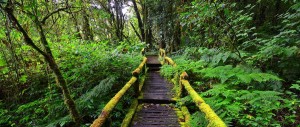The north of Akagera is mostly fairly low-lying grasslands and savannah plains, similar in feel to the ‘traditional’ safari areas of East Africa. To the west are rolling hills and valleys more typical of Rwandan countryside while to the east, the Akagera River feeds into a series of lakes, marshes and papyrus swamps that constitute central and eastern Africa’s largest protected wetlands. So, for a fairly small National Park, an Akagera safari can be extremely diverse with a variety of habitats, wildlife and birds, and some lovely scenery.
Akagera National Park is managed in conjunction with the conservation organization African Parks. New perimeter fences and anti-poaching measures have made a huge difference to its animal populations.
Safaris to Akagera National Park
Akagera National Park is a comfortable 2-3 hour drive from Kigali and can be visited on a long day trip if you’re short of time. The only entry to Akagera National Park is via Kiyonza Gate in the south, close to the Park Headquarters and Akagera’s best lodge. (Nyungwe Gate in the north is currently only available to exit the Park).
Akagera safari camps and lodges
At present, there are only two accommodation options in Akagera National Park aside from camping. Ruzizi Tented Lodge opened in 2013 and is close to the main gate to the south. Managed by African Parks, it’s a pretty bush camp on the shores of Lake Ihema. The other option, Akagera Game Lodge.
Activities on an Akagera safari
Akagera National Park’s roads have improved significantly since African Parks came on board allowing for varied game drives around plains, hills and lakes. They usually take place in the mornings and afternoons, or will take a full day if venturing to the north, with night drives an option for spotting Akagera’s nocturnal wildlife.
Boat trips along the shores of Lake Ihema, Rwanda’s second largest lake, yield some great aquatic bird sightings and you can even fish on Lake Shakani.
Wildlife of Akagera National Park
Akagera’s wildlife has increased significantly over recent years and the latest count estimated that the Park is now home to some 8,000 large animals. The new perimeter fence completed in late 2013 should also impact positively on numbers.
Plans are afoot to reintroduce lions and possibly rhinos, making Akagera National Park a “big five” destination once again. In the meantime, because of the lack of predators, game is surprisingly relaxed and relatively easy to spot.
Animals currently found in Akagera
The game on an Akagera safari includes most of the usual plains species. Impala and topi (known as tsessebe in Southern Africa) seem to be dominant, with eland, oribi, Masai giraffe, Defassa waterbuck, reedbuck, bushbuck, sable and roan antelope also present. Burchall’s zebra, hippo and crocodile are commonly seen whilst game viewing; buffalo are more prevalent in the north as are elephants.
One elephant in particular is well-known across Rwanda, having been semi-habituated when younger. Mutware is the grumpy old man of Akagera – at 50 years old, he can be calm but can also be anti-social and your guide is likely to change direction should you encounter him on a drive.
Birds of Akagera National Park
Akagera National Park is especially good for birding, with over 480 species attracted by its diverse habitat. Savannah birds and raptors are prevalent and several endemic species such as the red-faced barbet are often seen.
Short boat trips are available on Akagera’s lakes which will give you the opportunity to get close to the plentiful waterbirds including numerous African fish eagles, marabou stork, crowned cranes, open-billed stork, cormorants, herons and egrets. If you are lucky you may even get to see the elusive shoebill stork.




